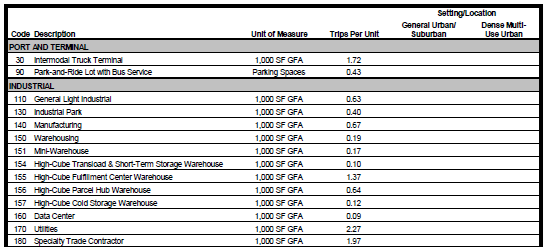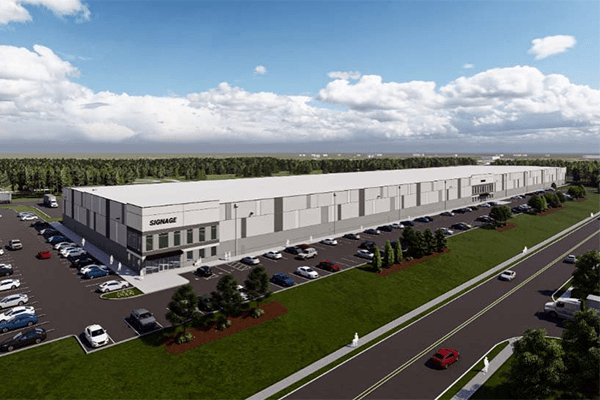|
RCBJ-Audible (Listen For Free)
|
Citizen Involvement Altered The Course On Planning Approval For A 220,000 Square Foot Warehouse In Valley Cottage
By Rick Tannenbaum
The ITE (Institute of Transportation Engineers) recognizes at least five different types of warehouses and has different land use codes for each one, from what it deems an ordinary warehouse to various kinds of high-cube distribution and fulfillment centers, including cold-storage warehouses.
Most municipal zoning codes lump them all together into a general warehouse category, not recognizing the variety and intensity of uses which different types of warehouses encompass. (Most municipalities do have a separate use designation for mini-warehouses, which are really self-storage units, but that’s the subject for a different day.)
For example, a warehouse for a moving and storage company with a few trucks and some long-term storage is a much less intensive use than a typical Amazon or UPS facility with large trucks bringing in masses of goods and a fleet of smaller trucks and vans making deliveries all day long in and around residential areas. Both can be built as-of-right under most current “warehouse” zoning.
Zoning codes need to be updated to reflect these different types of warehousing uses so that each type of warehouse use is situated appropriately in each municipality, whether that be encouraged in proximity to major highways or prohibited in residential neighborhoods. The ITE has dramatically different traffic calculations for each type of warehouse use, and planning boards need to recognize these differences when assessing traffic, air quality, noise, and quality of life environmental impacts. Many don’t.
The Clarkstown Planning Board last week greenlighted a proposal for a 220,000 square-foot warehouse on 20+ acres in Executive Park along Route 303.
Lincoln Equities Group of Rutherford NJ agreed to limit its project to being a category “150 warehouse,” foreclosing on the possibility of using the facility as a package hub or a fulfillment center, even though either of those uses were permitted as-of-right by the local zoning code. This compromise arose from the recognition that the applicant’s traffic study only projected traffic for the 150-warehouse category (see below) in support of its finding that there would be no significant impact on local traffic. By limiting its traffic presentation to the least intensive use, it essentially imposed upon itself a restriction against more intensive uses. A map note will be included on its final site plan prohibiting the more intensive uses for the site.
According to the ITE: A high-cube warehouse is a building that typically has at least 200,000 gross square feet of floor area, has a ceiling height of 24 feet or more, and is used primarily for the storage and/or consolidation of manufactured goods prior to their distribution to retail or other locations. This definition applies to both the 9th and 10th editions of the ITE manual.

The two most relevant Land Use categories for High-Cube Warehouses are 155 (High-Cube Fulfillment Center Warehouses) and/or 156 (High-Cube Parcel Hub Warehouse). Local zoning codes generally do not recognize these more intensive uses and leave it to planning boards to determine whether or not high-cube warehouses are appropriate in the locations proposed. Complicating the matter even more is that many developers will not disclose to planning boards who their intended tenants are. And, some building are constructed on spec, without a particular tenant signed up.
The difference between the code choices is significant, as the ITE Common Trip Generation Rates for each category differs significantly.
For the 150 general warehousing category, the ITE estimates .19 trips per 1000 square feet of Gross Floor Area for Peak Hour Trip Generation Rates.
For High-Cube Fulfillment Center Warehouses (category 155), the ITE estimates 1.37 trips per 1000 square feet of Gross Floor Area for Peak Hour Trip Generation Rates.
And, for High-Cube Parcel Hubs (category 156), the ITE estimates .64 trips per 1000 square feet of Gross Floor Area for Peak Hour Trip Generation Rates.
The Fulfillment Center estimate is more than seven times (7X) the traffic trips per unit than the general warehouse category. And the Parcel Hub Warehouse is more than three times (3X) the estimates of the general warehouse category.
Many zoning codes allow “warehouses” in the manufacturing, industrial, light industrial, office park and laboratory/office zones. As towns and villages prepare updates to their comprehensive plans, they must consider establishing limited zones where high-cube warehouses are permitted as-of-right or where they may be allowed only by special permit.
Given the proliferation of new warehouse projects, especially those seeking to be “last mile” projects, the failure to update zoning codes accordingly is certain to compromise residential and mixed use areas where general warehousing is currently permitted.
Rick Tannenbaum brokers commercial properties with Houlihan Lawrence Commercial Real Estate. Phone: 917-689-1799 rtannenbaum@hlcommercialgroup.com
This piece first appeared in the “CRE-Connect (Commercial Real Estate)” Substack













